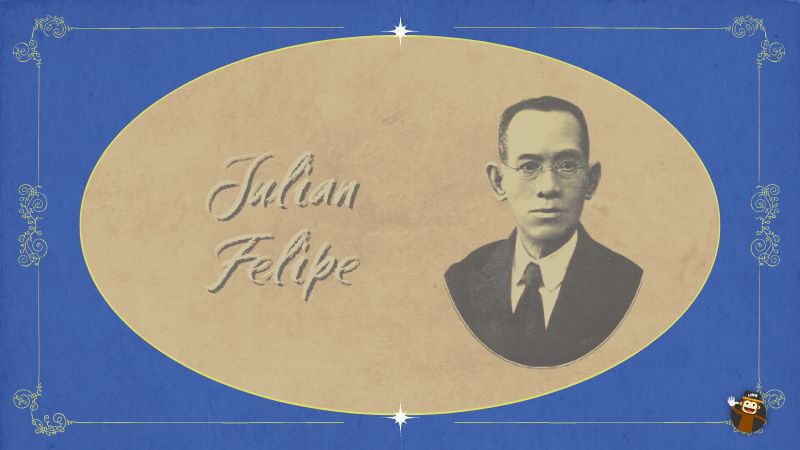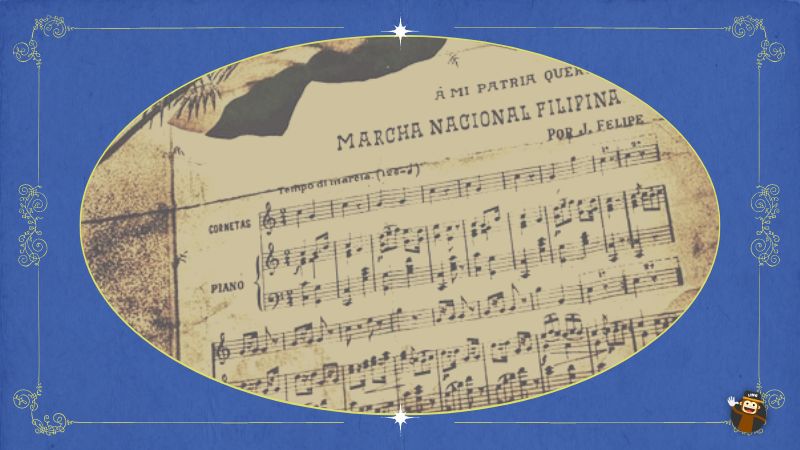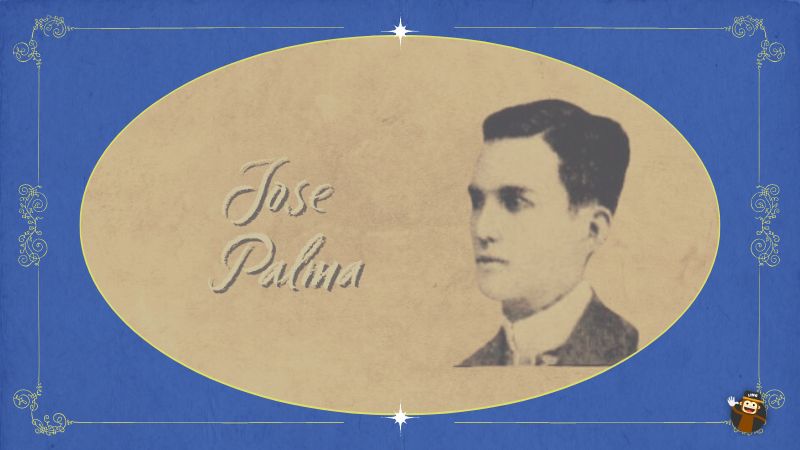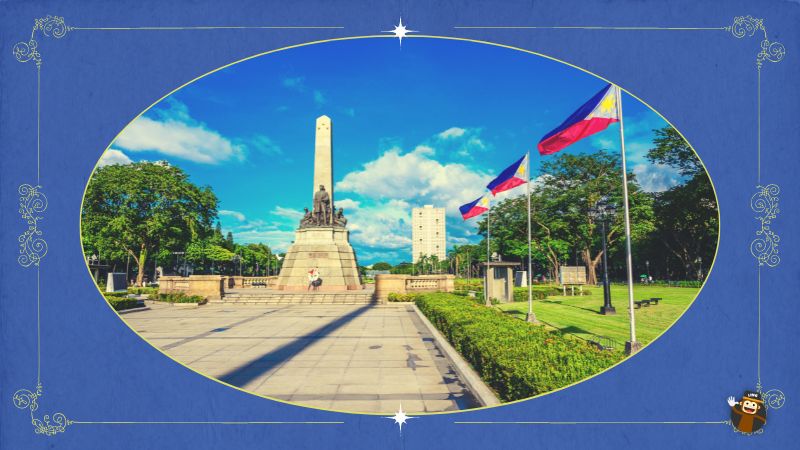Have you heard how beautiful the Philippine National Anthem, Lupang Hinirang, is? Today, let’s dive deeper and learn about the Philippine National Anthem words.
Even if you’re not from the Philippines, you have surely heard the Philippine National Anthem. If you watch boxing, like the matches of Manny Pacquiao, you might have heard it sung by great Filipino singers. Just recently, the Philippine National Anthem was sung in the Olympics for the very first time when Hidilyn Diaz won a gold medal in weightlifting. When singing the National Anthem of the Philippines, you can see how Filipinos unite and pay respect.
But, what exactly a national anthem is? A national anthem is a patriotic musical composition that honors a country or nation’s history and customs by symbolizing and invoking them. By learning the Philippine National Anthem, you’ll be able to know more about their culture. You will also know what to do when you’re in the Philippines, and the anthem is being sung. Lastly, learning about the Philippine National Anthem is a way to show your respect for the country and its people.
So, in this blog, we will learn all about the Philippine National Anthem, which is entitled Lupang Hinirang and the words to Philippine National Anthem.
Brief History Of The Philippine National Anthem
The Philippine National Anthem was created as a result of the revolution, as a reaction to the demands of the period that gave rise to it. And in 1898, when the Filipino insurgency against Spain entered its second year and victory appeared certain, this demand developed.
Gen. Emilio Aguinaldo wisely understood the importance of having national emblems to unite the country against the enemy. He hired Cavite pianist and composer Julian Felipe on June 5, 1898, to create a march for the revolutionaries.

After six days of effort on the task, Felipe performed his compositions in front of the president and his lieutenants while seated in front of a piano in the Aguinaldo living room on June 11. Felipe gave the song the moniker Marcha Filipino Magdalo (after Aguinaldo’s given name and his Katipunan faction), which was immediately accepted and changed to Marcha Nacional Filipina (Philippine National March).
On June 12, 1898, when Aguinaldo declared Asia’s first sovereign republic in front of a crowd cheering him, the national song was played in public for the very first time. That day, the young nation received two motivating emblems. The national flag was also flown for the first time during the ceremony to the rousing notes of the march nacional played by the San Francisco de Malabon (now Heneral Trias) band, whose members had just learned the tune the day before.

Felipe’s music was just a march, however, so there were still no words. It was impossible to sing. As with the music, there was a need for lyrics as well. The Treaty of Paris, signed in December 1898, saw Spain transfer the Philippines to the United States of America. After rebelling against Spanish domination, the Filipinos were placed under American colonial rule. The Filipino-American War began in February 1899.

Jose Palma, a 23-year-old soldier who was equally skilled with the pen and the sword, provided the rebellious lyrics to accompany the powerful notes of Felipe. The “Filipinas” verse he produced was attached to the Felipe composition. The youthful nation at war soon adopted the anthem. However, on March 23, 1901, the war with America came to an end when Aguinaldo was captured in Palanan, Isabela.
The Filipino people and their national hymn endured years of humiliation in the early part of the century. The anthem’s chanting was discouraged by American authorities, and in the 1920s, various English and Tagalog versions of Palma’s original Spanish lyrics were made. The Tagalog and English versions by Camilo Osias and M.A.L. Lane received the greatest attention.
A revised version written by the Surian ng Wikang Pambansa (Institute of National Language) was approved in 1956. These are the official Filipino lyrics now being sung around the nation and spread widely through radio, television, and film.
Philippine National Anthem Policies And Protocols
When singing the Philippine National Anthem, Lupang Hinirang, there are things that you need to know and observe. Here are some of those to keep you guided and to never disrespect the Philippines and the Filipinos.
During The Flag-Raising
- The assembly must face the flag as it is being raised.
- The flag is to be swiftly raised at the first note of the national anthem.
- Everyone in the room must stand at attention and salute the flag with their right palm over their heart (center to left part of the chest).
- Hat-wearers are required to take off their hats and stand in a heart-shaped salute. Those wearing military uniforms or civilian military training outfits must salute as directed by their regulations. The salute continues until the National Anthem has finished playing or singing.
Lowering The Flag
- When lowering the flag, it must be done gradually such that it is at the bottom of the mast when the National Anthem’s final note is heard.
- Salutations similar to those given during flag-raising ceremonies are expected when the flag is being lowered.
Rendition Of The Music Of The Philippine National Anthem
- The Philippine National Anthem was composed by Julian Felipe as a march because it represented the fervor of our country’s revolutionary forefathers one hundred years ago during the Philippine Revolution.
- The National Anthem shall be played as a march as It was originally composed.
Singing Of The Philippine National Anthem
- The assembly must sing the national anthem of the Philippines with passion and in time with Julian Felipe’s masterwork.
The Philippine National Anthem
The Philippine National Anthem has a long history, and you have read a brief history of it above. So, every word that is used is really important and meaningful. Before knowing the lyrics, you should know that the title of the Philippine National Anthem is “Lupang Hinirang”, not “Bayang Magiliw”. Many people, even Filipinos, get this wrong, maybe because it’s the first line of the anthem.
Now, let’s learn the lyrics of the Philippine National Anthem, both Filipino and English Versions. You will notice that the translation is not a literal translation. It is translated based on context so it won’t lose its meaning and essence.
Filipino Version:
Lupang Hinirang
Bayang Magiliw
perlas ng Silanganan
Alab ng puso
Sa dibdib mo’y buhay
Lupang hinirang
Duyan ka ng magiting
Sa manlulupig
Di ka pasisiil.
Sa dagat at bundok
Sa simoy at sa langit mong bughaw
May dilag ang tula
At awit sa paglayang minamahal
Ang kislap ng watawat mo’y
Tagumpay na nagniningning
Ang bituin at araw niya
Kailan pa ma’y di magdidilim
Lupa ng araw
ng luwalhati’t pagsinta
Buhay ay langit sa piling mo.
Aming ligaya
Na pag may mang-aapi
Ang mamatay nang dahil sa iyo.’
English Version
Chosen Land
Land of the morning,
Child of the sun returning,
With fervor burning,
Thee do our souls adore.
Land dear and holy,
Cradle of noble heroes,
Never shall invaders
Trample thy sacred shore.
Ever within thy skies and through thy clouds
And o’er thy hills and sea,
Do we behold the radiance, feel the throb,
Of glorious liberty.
Thy banner, dear to all our hearts,
Its sun and stars alight,
O never shall its shining field
Be dimmed by tyrant’s might!
Beautiful land of love, o land of light,
In thine embrace ’tis rapture to lie,
But it is glory ever, when thou art wronged,
For us, thy sons to suffer and die.
Words To Philippine National Anthem
The words used in the Philippine National Anthem are critically chosen and beautifully used to give an impactful message to the people. Now that you have learned the lyrics, we will learn different words on the Philippine National Anthem.
Bayang Magiliw
Perlas ng Silanganan
Alab ng puso
Sa dibdib mo’y buhay
English Translation:
Land of the morning,
Child of the sun returning,
With fervour burning,
Thee do our souls adore.
Meaning:

“Bayang magiliw in Filipino” literally means “Friendly/Hospitable (Magiliw) Country (Bayan)”. The Philippines is known for being hospitable and friendly and that’s what the first lines in the first stanza mean. The second line “Perlas ng Silanganan” simply means “Pearl of the Orient”, and indeed, when you come to the Philippines, you will understand why their land was called this way. They have abundant natural resources, which have drawn the invaders to come. They also have breathtaking scenery and, of course, rich culture and traditions.

The third and fourth lines symbolize the burning love of Filipinos for their country that is present in their hearts. The line “Alab ng puso” literally means “Blazing/Burning heart”, while “Sa dibdib mo’y buhay” means “Alive/Present/Can be felt on your chest”. This burning love for their country is rooted in their struggles and hardships from the colonizers throughout their history.
| Tagalog | English Translation |
| Bayan | Country; Town; Nation |
| Magiliw | Friendly; Hospitable; Affectionate |
| Perlas ng Silanganan | Pearl of the Orient |
| Alab | Flame; Blaze |
| Puso | Heart |
| Dibdib | Chest |
| Buhay | Alive |
Lupang hinirang
Duyan ka ng magiting
Sa manlulupig
Di ka pasisiil.
English Translation:
Land dear and holy,
Cradle of noble heroes,
Never shall invaders
Trample thy sacred shore.

Meaning:
The line “Lupang hinirang” means “chosen land”, while “Duyan ka ng magiting” literally means “You’re a cradle/hammock of the braves”. On the other hand, the line “Sa manlulupig” means “To the invaders”, while“di ka pasisiil”means “you will reject oppression.”
The second stanza says that this chosen land or country, which is the Philippines, is full of brave heroes and that Filipinos will never surrender to invaders. For those who do not know, the Philippines is colonized by different countries: Spain, America, and Japan. That is why there are heroes who stood up for the liberty of the Philippines, like Dr. Jose Rizal, Andres Bonifacio, Antonio Luna, and Emilio Jacinto. Until today, these heroes are commemorated for their heroism and sense of nationalism.
| Tagalog | English Translation |
| Lupa | Land |
| Hinirang | Chosen |
| Duyan | Hammock; Cradle |
| Magiting | Invader; Oppressor |
| Pasisiil | To be oppressed |
Sa dagat at bundok
Sa simoy at sa langit mong bughaw
May dilag ang tula
At awit sa paglayang minamahal
English Translation:
Ever within thy skies and through thy clouds
And o’er thy hills and sea,
Do we behold the radiance, feel the throb,
Of glorious liberty.

Meaning:
The lines “Sa dagat at bundok” means “In the seas and mountains” while “Sa simoy at sa langit mong bughaw” means “In your breeze and in your blue skies”. The lines “May dilag ang tula at awit sa paglayang minamahal” means “there’s radiance or beauty when singing about glorious liberty.”
This stanza means that they sing in joy at the freedom that the mountains, the sea, and even the breeze and harmony of their heaven bring. The Philippines has a magnificent nature indeed that they are proud of. Even today, many tourists go to the Philippines to visit the beautiful beaches, mountains, and other tourist spots. As a Filipino, nothing compares to the joy of having these blessings, as well as being a free country.
| Tagalog | English Translation |
| Dagat | Sea |
| Dilag | Splendor; lustrous beauty; gorgeousness |
| Simoy | Breeze |
| Langit | Heaven |
| Bughaw | Blue |
| Tula | Poem |
| Awit | Song |
| Paglaya | Freedom; Liberty |
| Minamahal | Loved; Adored |
Ang kislap ng watawat mo’y
Tagumpay na nagniningning
Ang bituin at araw niya
Kailan pa ma’y di magdidilim
English Translation:
Thy banner, dear to all our hearts,
Its sun and stars alight,
O never shall its shining field
Be dimmed by tyrant’s might!

Meaning:
This stanza gives a spotlight to the Philippine flag. It says in this verse that the brightness of their flag is the glitter of their victory. If you also take a look at the Philippine flag, you will see three stars and a sun, and the sun has eight rays which represent the eight provinces that led to the Philippine Revolution and were placed under martial law during the Spanish occupation.
| Tagalog | English Translation |
| Kislap | Sparkle; glitter; sheen; luster; flash |
| Watawat | Flag |
| Tagumpay | Success |
| Nagniningning | Shining |
| Bituin | Stars |
| Kailan pa ma’y | Never |
| ‘Di/ Hindi | No |
| Magdidilim | Dimmed |
Lupa ng araw
ng luwalhati’t pagsinta
Buhay ay langit sa piling mo.
Aming ligaya
Na pag may mang-aapi
Ang mamatay nang dahil sa iyo.’
English Translation:
Beautiful land of love, o land of light,
In thine embrace ’tis rapture to lie,
But it is glory ever, when thou art wronged,
For us, thy sons to suffer and die.

Meaning:
The last stanza of the Philippine National Anthem, “Lupang Hinirang” is truly a beautiful verse. The lines “Lupa ng araw ng luwalhati’t pagsinta” means “Land of light/sun, joy and love” while “Buhay ay langit sa piling mo” means “Life feels heaven in you”. The next lines “Aming ligaya na ‘pag may mang-aapi ang mamatay ng dahil sa’yo” means “It is our pleasure to die for the country when there is an oppressor.”
The last stanza symbolizes deep nationalism or love for their country. It first described that the Philipines is a land of joy and love. Then, it is emphasized in the last lines that Filipinos are honoured to die for their country.
| Tagalog | English Translation |
| Lupa | Land |
| Araw | Sun |
| Lualhati | Joy |
| Pagsinta | Love |
| Buhay | Life |
| Langit | Heaven |
| Sa piling mo | In your arms |
Learn More Than Just The National Anthem! Learn Tagalog Now!
Learning about the National Anthem of the Philippines will truly give you a good start in learning more about the Tagalog language. But, if you want to learn more, you might be needing help from different tools and resources. Good thing Ling App can do its magic for you.

By just downloading the app, you will already have access to interactive lessons and activities that will surely develop your language skills. Have fun with engaging lessons, quizzes, and games. Learn more about Tagalog grammar with extensive grammar explanations. Practice your pronunciation with voice recognition and audio recordings from a native speaker.
So, waste no time. Grab your phone/computer and learn Tagalog with Ling App now!


































































